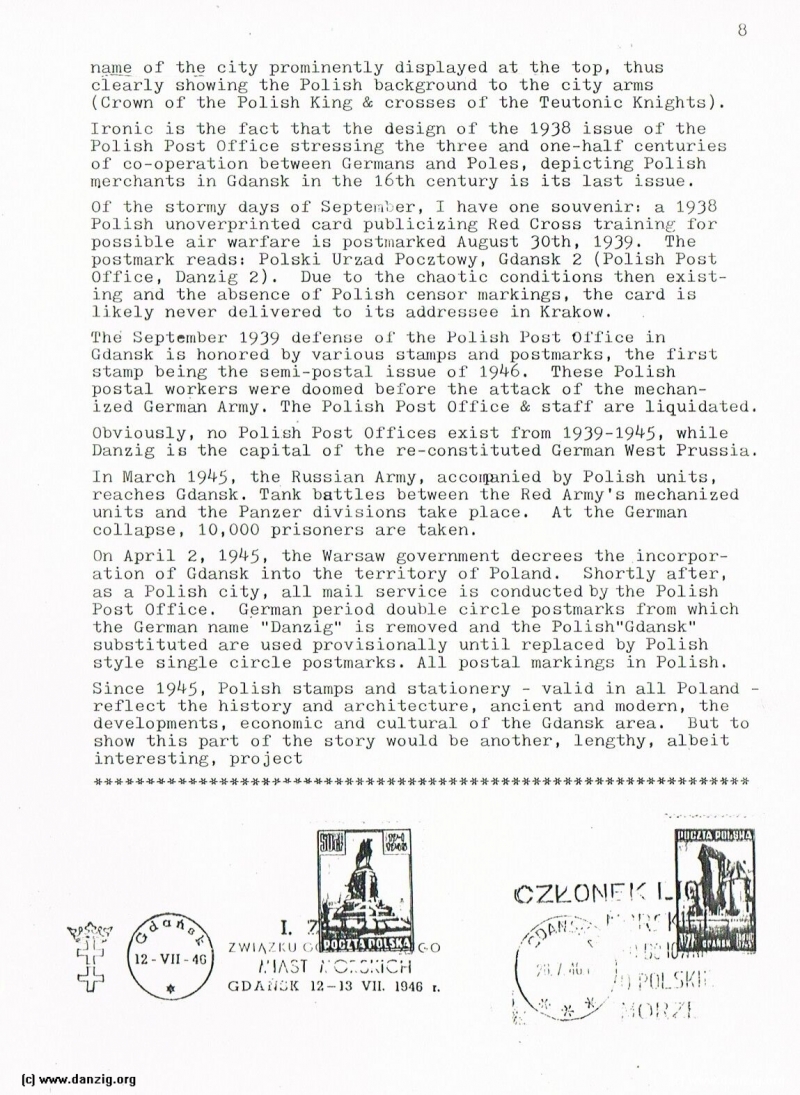
name of the city prominently displayed at the top, thus clearly showing the Polish background to the city arms (Crown of the Polish King & crosses of the Teutonic Knights).
Ironic is the fact that the design of the 1938 issue of the Polish Post Office stressing the three and one-half centuries of co-operation between Germans and Poles, depicting Polish merchants in Gdansk in the 16th century is its last issue.
Of the stormy days of September, I have one souvenir: a 1938 Polish unoverprinted card publicizing Red Cross training for possible air warfare is postmarked August 30th, 1939. The postmark reads: Polsici Urzad Pocztowy, Gdansk 2 (Polish Post Office, Danzig 2). Due to the chaotic conditions then existing and the absence of Polish censor markings, the card is likely never delivered to its addressee in Krakow.
The September 1939 defense of the Polish Post Office in Gdansk is honored by various stamps and postnïarlcs, the first stamp being the semi-postal issue of 1946. These Polish postal workers were doomed before the attack of the mechanized German Army. The Polish Post Office & staff are liquidated.
Obviously, no Polish Post Offices exist from 1939-1945, while Danzig is the capital of the re-constituted German West Prussia.
In March 1945, the Russian Army, accompained by Polish units, reaches Gdansk. Tank battles between the Red Army’s mechanized units and the Panzer divisions take place. At the German collapse, 10.000 prisoners are taken.
On April 2, 1945, the Warsaw government decrees the incorporation of Gdansk into the territory of Poland. Shortly after, as a Polish city, all mail service is conducted by the Polish Post Office. German period double circle postmarks from which the German name “Danzig” is removed and the Polish”Gdansk” substituted are used provisionally until replaced by Polish style single circle postmarks. All postal markings in Polish.
Since 1945, Polish stamps and stationery - valid in all Poland - reflect the history and architecture, ancient and modern, the developments, economic and cultural of the Gdansk area. But to show this part of the story would be another, lengthy, albeit interesting, project
Danzig Report Nr. 25 - Winter - 1979, Page 13.
Hits: 3232
Added: 08/06/2015
Copyright: 2025 Danzig.org

